Recently this memorial was placed on the previously unmarked grave of John E. Dibley at Willow Wild Cemetery, and learning about this from Carolyn Lawrence, I wanted to know who had purchased and placed this memorial.
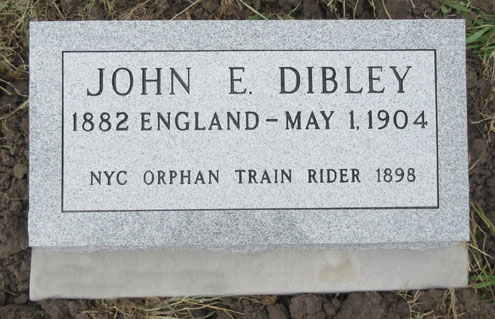
I spoke with Larry Dibley and his wife Dixie, who along with Larry’s brother John Dibley and his wife Dorris, had purchased the marker. Larry and John are the grandsons of George Dibley, the brother of John E. Dibley. Dixie has done considerable research on the family. She learned that the family with several children had emigrated from England to New York City in 1887, when John was 5 years old. There were three other children at that time. George was later born in New York City. Both boys came under the care of the Children’s Aid Society in New York City. It is not known what happened to the parents or why the boys came to be placed in the care of the Children’s Aid Society.
In the late 1800s the Children’s Aid Society of New York sent children from New York City to towns in Texas to become foster or adopted children. These children had been homeless, orphaned or abandoned.
An article in the Bonham News of November 4, 1898 stated that boys aged between 12 to 16 years would be arriving on a train in Bonham on November 18. The local Committee to receive the boys included Dr. R. E. Martin and Judge R. M. Lusk.
John E. Dibley and his brother George Dibley arrived in Bonham on this train.
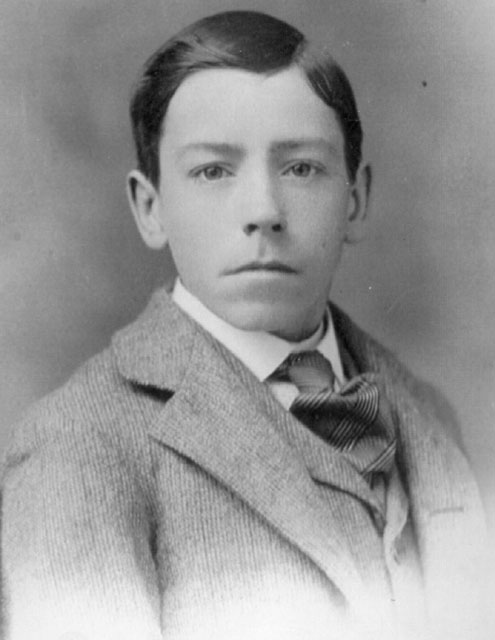
A November 19, 1898 Bonham newspaper stated:
THE ORPHAN BOYS
They all got homes and just as many more could have been accommodated easily.
Yesterday was distribution day for the orphans brought here from New York. There was a meeting at the court house and the allotment of homes for the boys whose mothers and fathers have passed away took place. It was a scene to touch the heart of those who love their fellow man. There were good looking boys, handsome boys, and smart boys, all waiting for homes. Willing and anxious hearts and hands were there to take them and share their all with them through life. After each and every one had gotten his home, there were plenty of good people left who wanted boys to take home and feed, clothe and educate for further usefulness, whereas, had they been left to their fate in the great city of New York, they probably would have gone to the bad.
Agent R.N. Brace and Attorney Frederick King were on hand to represent the Children’s Aid of New York the latter making an address. These gentlemen are performing their work nobly and all praise them in their chosen occupation.
John died in 1904 at the age of 19, six years after arriving in Fannin County. According to a lengthy obituary in the Bonham News, John was placed with a farm family, however he was in poor health and could not perform farm work. But he was taken in by the family of Sam Hampton in Bonham and nursed back to health by Mrs. Hampton. He then began working for the Bonham News, and later became a student studying stenography and typewriting in a commercial college in Ft. Worth, Brantley Draughn. However, he became ill in Ft. Worth and returned to Bonham, where he died shortly thereafter at S. B. Allen Memorial Hospital. Another obituary stated: “Everybody who knew Johnnie Dibley esteemed him highly and learned with deep regret of his death.”
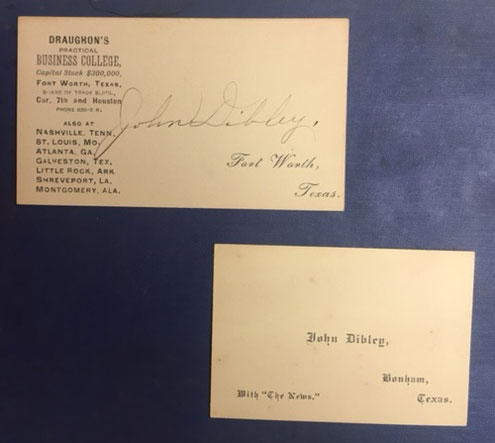
He was buried at Willow Wild in the plot of Dr. Richard E. Martin (see more about Dr. Martin below). His brother George attended the burial “and surrounded by friends saw the last flower laid by loving and kindly hands on his grave.”
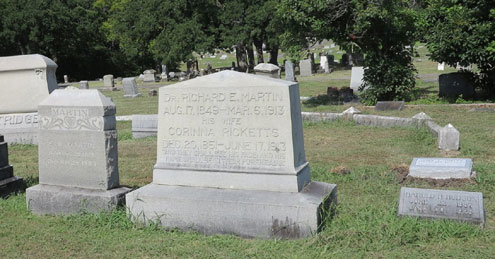
George Dibley, John’s younger brother, was placed with a farming family (John K. and Thaney Cunningham Dickerson), and continued to live in Fannin County, marrying Edna Cunningham and having a daughter and a son, who was named John. He farmed in the Dial community and died at the age of 68 years in 1959. He was a member of the Methodist Church at McCraws Chapel. He is buried in Oakwood Cemetery in Honey Grove. His obituary makes no mention of his arrival in Fannin County on the orphan train.
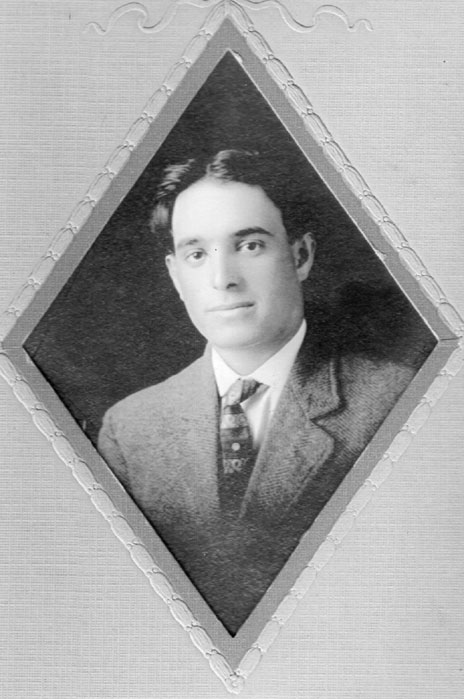
As was stated in the November 4, 1898 newspaper article, one of the individuals in Bonham who was active in the placement of the orphan boys was Dr. Richard E. Martin, who had himself taken in two of the boys on the same train on which John Dibley arrived. One of the boys taken in by Dr. Martin, Harold Hudson, died in 1928 and is also buried in Dr. Martin’s cemetery plot at Willow Wild.
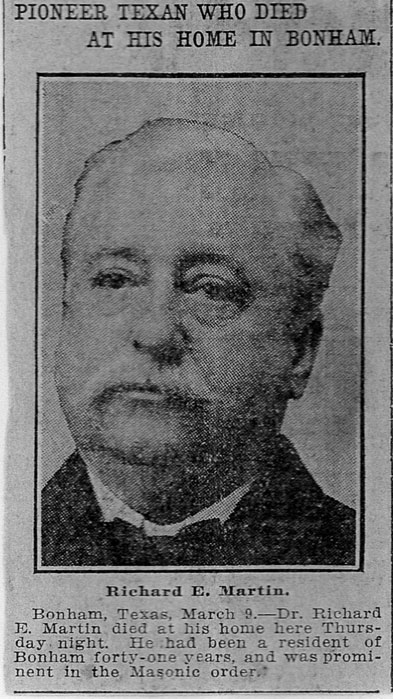
When I spoke with Dixie Dibley, she told me that while she knew that some of the boys who came on the orphan trains ended up with less than desirable arrangements, for John and George their removal from New York and subsequent lives in Fannin County were wonderful, considering the alternative in New York. Although John’s life was cut short, it was apparently very rich during the time he was in Texas. And George’s dear remembrance of his brother is obvious because George not only named his son “John” but also kept the photo, the business cards, John’s Brantley Draughn textbooks and an obituary, which the family found in George’s New Testament along with the photo of Dr. Martin.

Larry and Dixie Dibley are fortunate that Willow Wild Cemetery has such good records and they were able to locate John’s burial plot. I know they are proud of the marker, as is the Willow Wild Cemetery Association. Dixie wrote to me: “Our ancestors lived much harder lives than we have lived. We are grateful that they found kindness from others and paved a path for a better life for us. They should not and will not be forgotten, for their existence mattered.”
The memorial stone and this article shares this story with the Fannin County community. Many thanks to Larry and Dixie Dibley for sharing this information and photographs.